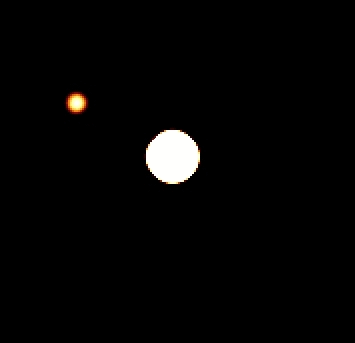 |
Астронет: Астрономическая картинка дня Евгения со спутником http://www.variable-stars.ru/db/msg/1163977/eng |
Eugenia's moon has a nearly circular orbit with a radius of 1,190 kilometers which it completes once in 4.7 days. The orbit appears oval-shaped because it is tilted at a 45 degree angle to the line-of-sight. Knowing the moon's orbit allows astronomers to calculate the asteroid's mass. Combining mass and size determines the asteroid's density, which in this case gives a surprising result - Eugenia is found to have a density only 20% greater than water. The low density suggests that Eugenia itself is a porous "rubble pile" of rocks or composed mostly of water-ice with only a little additional rocky material.
Authors & editors:
Robert Nemiroff
(MTU) &
Jerry Bonnell
(USRA)
NASA Web Site Statements, Warnings,
and Disclaimers
NASA Official: Jay Norris.
Specific
rights apply.
A service of:
LHEA at
NASA /
GSFC
& Michigan Tech. U.
